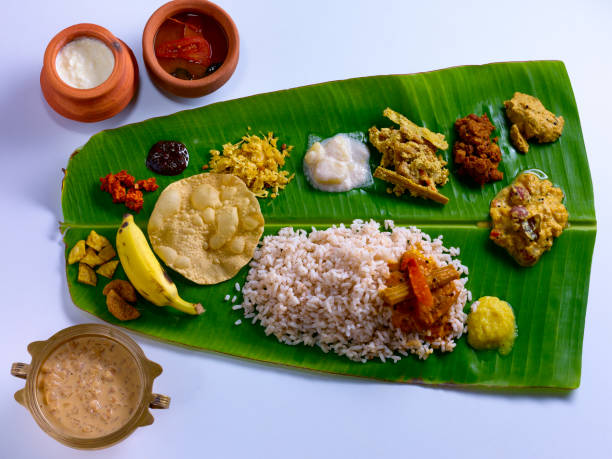Your genes could influence your food preferences, whether you prefer salty foods or fruit as a snack. Understanding how genetic preferences vary from person to person may one day help to create bespoke diet plans that take into account the individual’s genetic preferences.
Joanne Cole, a researcher at the University of Colorado, says, “Die,tary intake can be influenced by a variety of factors such as socioeconomic status and culture.”
Cole, along with her colleagues, have identified 814 regions of the human genome associated with different aspects of a person’s diet, such as how much meat, fish, and vegetables they consume.
Your genes only play a small role in how your body breaks down food
The team wanted a better understanding of whether these regions influence food choices directly or indirectly. Cole says that genes that influence diabetes risk could also affect dietary intake because of changes in disease management, such as eating less sugar.
Researchers carried out an association study called phenome-wide for 814 different regions. It involves scanning a single gene variant for traits such as eating habits, taste preferences, and health disorders to determine if an association exists. The data of around 500,000 UK Biobank participants was used to scan each region for over 4000 traits.
The researchers were able to identify 481 genomic regions that directly influence dietary intake via flavor perceptions and tastes. The research was presented in Boston, Massachusetts, at Nutrition2023 – the annual meeting of the American Society for Nutrition. Salt, water, fruit, fish, and alcohol are some of the food and drink most affected by genes.
Cole says that consumers report flavor as their primary food choice driver. Understanding how people perceive different flavors could be the key to improving healthy eating through personalized nutrition.
I’m now focusing on identifying sensory genes that are involved in dietary intake and understanding how people with different gene variants of these taste- and smell receptors activate their brains differently to experience pleasure and reward. The goal is to help people eat healthier, and flavor is the key.
Photos of Moolec’s Piggy Sooy Beans show that they have a pinky-red tint inside (see the picture above). It is, therefore, likely that the gene added is a haem-containing protein, such as myoglobin. Myoglobin is responsible for the color of red meat and contributes to its taste.
Impossible Foods adds soy leghaemoglobin, a plant heme-protein, to its burgers for a meatier look and taste. Leghaemoglobin can be found naturally in the roots and seeds of soya, but Impossible Foods has to manufacture it using genetically modified yeast.
Motif, another company, produces beef myoglobin in the form of an add-on known as Hemani, which is used for meat substitutes. It is planning to manufacture it using modified maize in order to increase production.
Dhingra said that the proteins added to Piggy Sooy were chosen for the “feel” in the mouth after the food was cooked. However, he would not comment if myoglobin is one of the added proteins or if anyone has tried the Piggy Sooy bean yet.
Dhingra says that products such as Piggy Sooy can help to make our food supply sustainable.
Cutting meat for Veganuary? Beans are a great source of protein
Mark Lynas, an environmental writer, thinks the same. He says that it should be more environmentally sustainable and avoid intensive animal farming.
Lynas argues that is the reason for the opposition to genetically engineered crops. He’s not sure how PiggySooy will be received by the public.
“I have no idea what will happen.” “It’s fascinating that they’ve gone all-out to the ‘piggy,’ thing. There is no attempt made to sweeten the pills,” says Lynas. “Of Course, Scientifically, it’s only a protein. And we already engineer many plants and microbes that make desirable proteins.”
The production of transgenic protein in plants and bacteria is called molecular agriculture. While we’re not aware of any research that specifically looks at molecular agriculture, there are strong indications that consumers are looking for more sustainable alternatives to livestock farming,” says Seren Kell from the Good Food Institute Europe. “Sales of plant-based alternatives have increased by 21% in Europe since 2020.”
Wood says that Bordeaux wines will continue to improve with climate change and as these weather patterns become common. However, there may be a limit to the improvement when it gets too hot and dry for grapes to thrive. Wood says, “we can’t know from this analysis when the failure point will occur.”
The terroir concept is supported by the chemical signature of Malbec wine
He says that vineyards will also be increasingly affected by extreme weather events such as wildfires, flooding, and hailstorms. These could destroy entire harvests.
Wood, who conducted the study, believes that other vineyards in the world that grow similar grape varietals, like Cabernet Sauvignon and Merlot, should also benefit.
He says winemakers can use these findings to improve their wines. For example, they could irrigate the soil in winter and trim the foliage of vines to reduce the shading of grapes. They could also increase drainage or erect rain covers in the event of a wet, humid summer.

